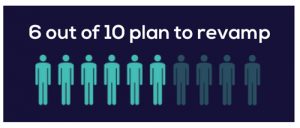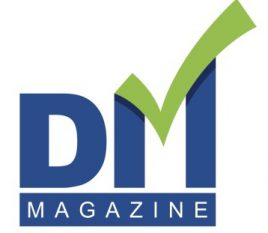Insights on Customer Loyalty
Loyalty programs remain a cornerstone of marketing strategies in North America, with 70.3 percent of program owners reporting satisfaction. However, while satisfaction levels are relatively high, persistent challenges underscore the need for refinement and innovation in many programs.
Key sources of dissatisfaction include poor integration with the overall customer experience, cited by 81.8 percent of program owners, and a lack of differentiation in competitive markets, highlighted by 54.5 percent.
These challenges reflect the ongoing complexity of designing loyalty programs that align seamlessly with broader business objectives while standing out in crowded industries.
Satisfaction also arises from the ability to foster deeper customer engagement (62.8 percent) and gather valuable customer data (58.3 percent). These factors highlight the immense potential of loyalty programs to transform customer relationships and deliver measurable results.
5.3X ROI reported among those with positive ROI
North American loyalty programs deliver positive ROI and foster deeper customer engagement. For those satisfied with their loyalty initiatives, the benefits are evident. Programs that drive repeat business, highlighted by 67.3 percent of respondents, deliver tangible value. Moreover, 86.1 percent of loyalty program owners report achieving a positive ROI, with an average return of 5.3X.
What’s more, North American businesses have increased investment in loyalty programs with plans for major overhauls. Spending on loyalty initiatives also underscores their growing importance, with 29.1 percent of the marketing budget in North America allocated to loyalty programs. This investment reflects a clear recognition of the critical role these programs play in driving long-term business success.
 Despite current satisfaction levels, 57.2 percent of program owners plan to revamp their loyalty programs within the next three years, and 53.7 percent intend to switch to a different platform. These trends highlight a strong commitment to addressing ongoing challenges and adapting to the market’s evolving demands.
Despite current satisfaction levels, 57.2 percent of program owners plan to revamp their loyalty programs within the next three years, and 53.7 percent intend to switch to a different platform. These trends highlight a strong commitment to addressing ongoing challenges and adapting to the market’s evolving demands.
Loyalty Managers Recognize the Potential of AI to Drive Efficiency and Engage Consumers in North America
With the rise of AI technologies in areas such as customer support, personalization, and data analysis, the adoption of AI in loyalty programs is gaining momentum. Currently, 36.0 percent of North American companies use AI in their loyalty programs, with an additional 49.2 percent planning to incorporate it in the near future. This shift toward AI-driven strategies reflects a growing recognition of AI’s potential to enhance productivity, improve customer engagement, and optimize program performance.
Moreover, AI’s capacity to automate routine tasks and generate deeper insights allows loyalty managers to focus on strategic initiatives, such as improving customer experience and refining program offerings.
Consumers are also showing increasing interest in AI-powered loyalty programs, with 34.0 percent more likely to join programs that leverage AI. This underscores AI’s ability to boost participation by enhancing personalization and delivering tailored experiences. Thirty-four percent of consumers would be more interested in joining a loyalty program if it used AI.
Key Motivations and Engagement Channels for Loyalty Program Members
To better understand customer behavior and improve loyalty strategies, it’s essential to identify the key factors driving customers to join and engage with loyalty programs. In both Canada and the U.S., the primary motivation is earning rewards, discounts, or cash back on future purchases. Free shipping and returns are particularly compelling in the U.S., while personalized offers and exclusive benefits are important incentives for attracting customers in both regions.
Mobile is the leading channel for engaging with loyalty programs in both countries, highlighting the importance of mobile optimization. In Canada, plastic cards slightly surpass digital cards, while in the U.S., both card types trail behind email, text, and website interactions.
The Growing Demand for Flexible and Lasting Loyalty Program Rewards
What makes North American customers join a loyalty program? Loyalty members in Canada and the U.S. prioritize flexibility and lasting benefits. Both Canadians and Americans value more earning opportunities and non-expiring points, as well as flexible redemption options such as discounts, gift cards, and exclusive experiences. These trends highlight the growing demand for loyalty programs that offer personalized and enduring rewards.
 What makes North American customers join a loyalty program?
What makes North American customers join a loyalty program?
Canada
- Earning rewards, discounts, or cash back on future purchases (78.3 percent)
- Receiving free shipping and/or free returns (36.0 percent)
- Receiving personalized offers or rewards (35.9 percent)
U.S.
- Earning rewards, discounts, or cash back on future purchases (73.7 percent)
- Receiving free shipping and/or free returns (48.0 percent)
- Receiving personalized offers or rewards (34.2 percent)
- Accessing rewards that are available at partner retailers (26.0 percent)
Getting access to member- only products and benefits & early access to sales and exclusive discounts (24.0 percent)
Building stronger connections with members begins with understanding what they truly value. Here, we highlight three key features that resonate strongly with both members and brands in the North American market.
Missed Opportunities for Loyalty Program Owners to implement point pooling.
In North America, 70.4 percent of consumers prefer to shop with brands that allow them to share loyalty accounts with friends or family to combine and pool points, reflecting a strong interest in collaborative earning and spending. However, only 29.8 percent of consumers currently share their loyalty accounts, and 38.2 percent would use this feature if it were available, highlighting a significant gap between consumer demand and program availability.
Despite strong consumer enthusiasm, many loyalty programs in North America have yet to adopt point pooling and family account features, leaving a significant gap between customer demand and program offerings. While 48.4 percent of loyalty programs in the region currently offer account sharing, only 27.9 percent of businesses plan to implement it in the future. This represents a critical missed opportunity for brands to meet consumer preferences and stand out in a competitive market.
Fully 70.4 percent of consumers would prefer to shop with brands that allow them to share loyalty accounts with friends or family to combine and pool points.
The demand for account sharing is evident, but businesses may wonder if the benefits outweigh the costs. Encouragingly, 7 out of 10 loyalty program owners who already offer this feature report net positive results. Allowing family and friends to earn and redeem rewards collectively can enhance emotional engagement and drive greater program participation.
Customization Boosts Engagement and Loyalty in Rewards Programs
The impact of customization on customer engagement is undeniable: 83.1 percent of program owners in North America agree that allowing members to customize their rewards positively influences engagement. Additionally, 81.1 percent of consumers prefer to shop with brands that offer this level of personalization.
However, not all companies have acted on this insight. While 56.5 percent of programs already leverage customization, only 30.4 percent of businesses plan to adopt it in the future. With 79.9 percent of organizations globally planning to launch programs with reward customization within the next two years, the competition is heating up.
Gamified Data Collection Drives Higher- Quality Consumer Insights
Data collection is often a sensitive topic for consumers, but gamifying the process can make them more willing to share information. In fact, 45.6 percent of consumers prefer sharing details like birth dates and hobbies through games or quizzes rather than traditional forms.
In North America, 40.6 percent of companies currently use gamified data collection in their loyalty programs, and 40.3 percent plan to implement gamification mechanisms for data collection or enrollment within the next two years.
Gamified data collection not only boosts consumer engagement but also yields more reliable and valuable insights. According to program owners, 71.9 percent believe gamification improves data quality, and 73.0 percent feel the benefits outweigh the costs. As gamification becomes more widespread, it promises a more engaging and effective way to gather consumer information.
With more companies adopting gamification, we anticipate a shift in data collection—transforming it from a simple insight-gathering tool into a core component of customer engagement and loyalty strategies.
This article is based on the 2025 Global Customer Loyalty Report, North American Version, from stratLX, in collaboration with antavo, AI Loyalty Cloud.




